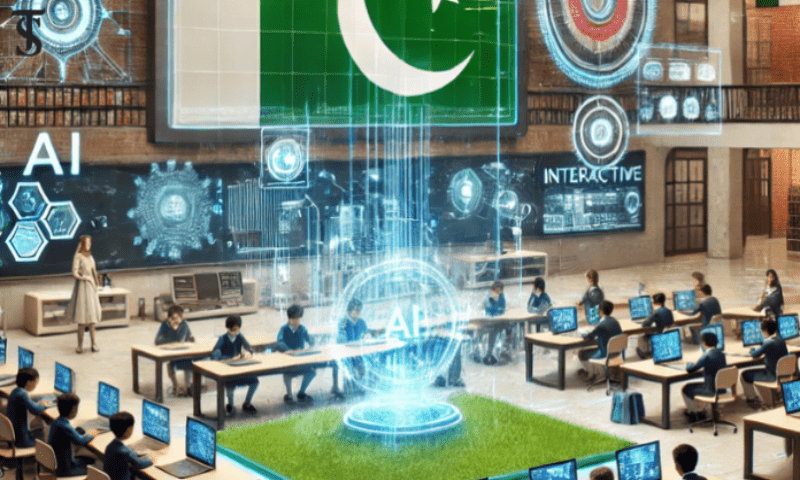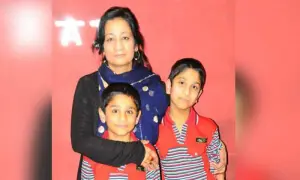Thinking machines, passive students? AI raises concerns in Pakistan’s classrooms
Artificial Intelligence is no longer a futuristic concept; it’s already in Pakistan’s classrooms, assisting students with writing, research, language learning, and even math problems.
Tools like ChatGPT, Grammarly, and Google Bard are becoming silent study companions.
While their benefits are real, a bigger question is now emerging: How can we use AI in education without letting it erase students’ original thinking and creativity?
Around the world, countries are grappling with this balance — and many are acting fast.
Finland, known for its innovative education system, has already introduced AI literacy at the school level, teaching students not just how to use AI, but how to question it.
Singapore is experimenting with AI in classrooms, but with strict human oversight and clear limits on passive use. Assignments still require personal reflection and creative input.
Japan has introduced “AI ethics” as part of digital literacy to ensure students understand when AI use becomes misuse.
In contrast, Pakistan has entered the AI wave without a policy framework in schools or colleges.
Students are experimenting with powerful tools before they’re taught what responsible use even looks like.
In the absence of guidance, many are unknowingly becoming passive users — skipping the struggle of learning and losing their edge in critical thinking.
“I use AI only when I get stuck,” says Zara Batool, a 10th-grade student, when asked by APP about her AI usage. “It explains topics better than my textbooks,” she remarked.
Areeba Bibi, a student at Margalla College, highlighted AI’s benefits, saying, “AI saves my time during back-to-back hectic assignments.”
But for Fatima Khan of the same institute, the tool is a performance booster: “It gives me quick ideas for presentations and helps me stay on track.”
However, she couldn’t offer a satisfying answer to how relying on AI might compromise her creativity.
This pattern isn’t unique — but the unchecked reliance is dangerous, especially in an education system already struggling to promote questioning and problem-solving. Teachers are noticing the shift and trying to create a balance.
“AI is the future. If taught properly from the primary level, it can be as powerful as books or the internet,” says Safina, an English teacher.
Yet others, like Arshad, a history teacher, warn, “Students now submit assignments they didn’t write. It’s damaging their originality.”
Rabia, a science teacher, adds, “Students no longer ask questions in class. They expect AI to answer everything. That worries me.”
The challenge for Pakistan is not whether to use AI — the real task is how to use it without weakening human potential.
According to Professor Ramzan, who has extensive experience teaching in Saudi universities, Pakistan must act swiftly to thoughtfully integrate AI into its education system.
He suggests introducing AI literacy in schools by teaching students how AI works, where it helps, and where it harms — making it part of digital studies from middle school onward.
He stresses the need to redesign school and university assessments to reward personal reflection, creativity, and practical application — areas AI can’t easily replicate.
To uphold academic integrity, tools like Turnitin’s AI writing detector, already in use in the West, should be adopted in Pakistan.
Professor Ramzan also advocates a shift in teaching philosophy — evaluating learning processes rather than just outcomes — to foster original thought and critical engagement.
Lastly, he emphasises training educators not only to detect misuse but to guide students in using AI as a thinking partner, not a substitute.
While private schools in urban centres may have begun experimenting with AI, the vast majority of public institutions still lack the infrastructure, training, and internet access to do the same.
This growing digital divide could create a two-tier education system — one where creativity is enhanced by AI, and another where students are left further behind.
If Pakistan embraces AI not as a shortcut but as a springboard for deeper learning, it can shape a future where students are not just consumers of technology but creators with it.
The real opportunity lies in teaching the next generation to think critically, imagine boldly, and use AI as a partner in their pursuit of knowledge.
With the right vision, AI can help unlock a more creative, curious, and empowered Pakistan.
For the latest news, follow us on Twitter @Aaj_Urdu. We are also on Facebook, Instagram and YouTube.
















Comments are closed on this story.